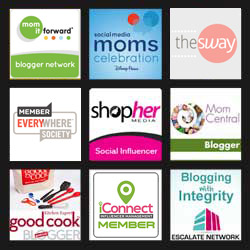
Pom responded with “In-store promotions are when you see our juice on sale in the store, our company actually pays for these promotions so when it’s on sale in stores we are providing this benefit for you.”
From Pom’s perspective, they already reimbursed the store for the juice’s sale price, and they didn’t want to reimburse for coupons on top of that. But from the consumers’ perspective, this wording was wreaking havoc at the register here in Chicagoland. Pom was on sale a couple weeks ago, and cashiers were telling shoppers that they could not accept the coupon because the juice was on sale. Aside from the notion that it’s a lot to ask of cashiers to read the fine print of every single coupon they scanned, we wondered who this coupon was for.
Coupon users are people who care about and monitor what they’re spending on groceries. Creating a coupon that can be used only when the item is at full price will eliminate its use by nearly everyone who is watching their grocery budget — the audience coupons presumably are aimed at. People willing to pay full price are typically not coupon shoppers — so, again, who is that coupon even for? Over the past few weeks, every major store in town has had this brand of juice on sale at some point. So, the manufacturer spent a lot of money on an ad campaign, printing coupons that no one could use during any sales.
Tonight, Pom Wonderful told Coupons In The News that they will no longer include wording restricting their coupons from being used during sales:
POM Wonderful issued us the following statement tonight:
“POM Wonderful has always been as passionate about our customers as we are about our products. We recognize that some customers were disappointed in the limitation attached to one of our recent coupons. After examining this issue, we have changed the wording on future coupons so they will no longer prohibit usage in combination with retailer promotions. We hope customers will take advantage of future coupons and promotional opportunities so they can continue enjoying POM Wonderful.”
Wonderful, indeed. And lesson learned: if you don’t read the fine print on your coupons, maybe you should. And if you don’t like what you read, maybe you should start asking questions. Couponers often know coupons better than the companies that issue them, after all.
This is great news for couponers everywhere. Imagine how our landscape would change if every manufacturer had decided to follow Pom’s lead and restrict coupon usage only to non-sale prices?
The same Coupons In The News article also notes a small change in the wording on P&G’s new coupons in the 8/26 insert. It’s so small that you may not have noticed it either — I didn’t:
… you may have noticed that coupons in the monthly “P&GbrandSAVER” insert this past weekend included a slight change in the fine print. No longer do they read “Limit of 4 like coupons in same shopping trip.” Instead, they read “Limit of 4 like coupons per household per day.”
A slight change, but a notable one. The fine print was first added last year, in an attempt to ward off “shelf clearers” who might amass large quantities of coupons for Procter & Gamble products and buy out their store’s supply. But some extreme couponers interpreted “same shopping trip” loosely – as in, completing one transaction, walking to the car, and walking back in for a new “shopping trip”. Or sometimes just doing multiple transactions back-to-back, if their store would allow it.
P&G’s new wording is meant to eliminate any ambiguity about the company’s intent. Today, a spokesperson told us that “the great majority of our consumers respect the limits of four identical coupons, since our data shows that the average consumer uses approximately 2 identical coupons per trip.” But they are “trying to avoid stock depletion and long lines at checkouts.”
As we’ve learned… we need to continue to pay attention to the ever-changing wording on our coupons.










hwendt12 says
but I’m glad that they HEARD their customers and TOOK ACTION. More companies need to follow that lead.
llamalluv says
My beef with this is that if it is their intention to not run conflicting promotions (sales and coupons) then they need to plan for that. They told me via e-mail that in store promotional prices are planned out a year in advance, so it’s not as if they don’t know that the sales are going to happen. They didn’t specify how far in advance they do their print advertising with SmartSource, but regardless of which came first, they still knew the other, conflicting promotion, was planned.
They are a multi-million dollar company owned by a multi-billion dollar holding company; surely they can afford to buy a calendar? This was a completely avoidable bad PR situation, IMO, and probably not the best timing, coming on the heels of being sued by the FTC for misleading advertising.
But, all snark aside, I do still love their juices and their sister company products (I’ve got salt and pepper pistachios in the basement right now!)